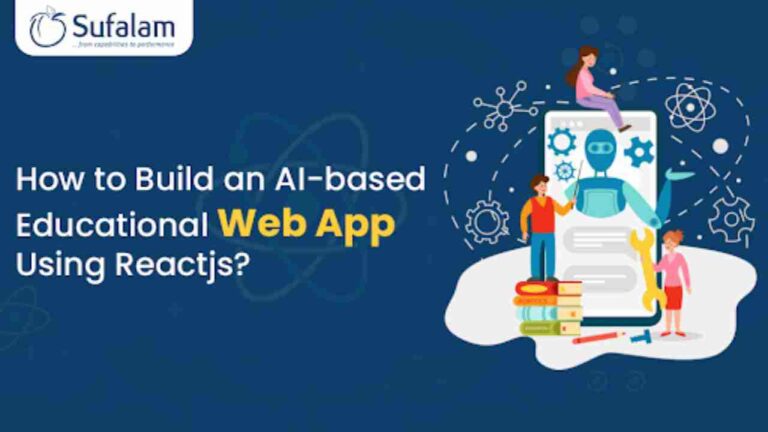- 1. Introduction
- 1.1. 1. Single Codebase, Multiple Platforms
- 1.2. 2. Fast Development and Iteration with Hot Reload
- 1.3. 3. Beautiful and Customizable User Interfaces
- 1.4. 4. Native Performance and Fast Execution
- 1.5. 5. Access to Native Features and APIs
- 1.6. 6. Excellent Documentation and Support
- 1.7. 7. Time and Cost Efficiency
- 1.8. 8. Easy Maintenance and Updates
- 1.9. 9. Wide Range of Plugins and Integration Options
- 1.10. 10. Strong Performance Testing and Debugging Tools
- 1.11. 11. Growing Popularity and Support from Google
- 2. Conclusion
Introduction
Mobile app development has become a crucial aspect of businesses’ digital strategies, with a growing demand for high-quality applications across platforms. In this dynamic landscape, developers need efficient tools that enable them to build robust, performant, and visually appealing apps. One such tool gaining popularity is Flutter—a cross-platform framework developed by Google. In this article, we will delve into the benefits of using Flutter for mobile app development and why it has become a go-to choice for developers. More about mobile app development you can find here App Development Services
1. Single Codebase, Multiple Platforms
One of the key advantages of Flutter is its ability to create apps for multiple platforms using a single codebase. With Flutter, developers write code once and deploy it on iOS, Android, web, and even desktop platforms. This eliminates the need to develop separate codebases for different platforms, reducing development time and effort while ensuring consistency across devices.
2. Fast Development and Iteration with Hot Reload
Flutter’s hot reload feature allows developers to see the changes they make to the code reflected in the app almost instantaneously. This rapid iteration process speeds up development, enabling developers to experiment, fix bugs, and fine-tune the user interface (UI) without the need for time-consuming recompilation. Hot reload enhances productivity, making Flutter an ideal choice for prototyping, UI development, and quick iterations.
3. Beautiful and Customizable User Interfaces
Flutter provides a rich set of customizable widgets that allow developers to create stunning and pixel-perfect user interfaces. These widgets can be customized to match the branding and design requirements of the app, resulting in visually appealing and engaging interfaces. Flutter’s widget-based architecture promotes code reuse and modular development, making it easy to create consistent and polished UI components.
4. Native Performance and Fast Execution
Flutter offers native-like performance and fast execution by leveraging the Dart programming language and Flutter’s rendering engine. Flutter apps are compiled to native machine code, which ensures speedy performance and smooth animations. The architecture of Flutter enables direct interaction with device components and APIs, eliminating the performance overhead associated with other cross-platform frameworks.
5. Access to Native Features and APIs
Flutter provides seamless access to native features and APIs, allowing developers to leverage device-specific functionalities. Whether it’s accessing the camera, sensors, GPS, or platform-specific services, Flutter offers plugins that integrate with native code, ensuring full access to the device’s capabilities. This feature-rich ecosystem empowers developers to create apps that make the most of the underlying platform’s capabilities without sacrificing performance or user experience.
6. Excellent Documentation and Support
Flutter benefits from extensive documentation and a supportive community. The Flutter documentation is comprehensive, well-organized, and regularly updated, making it easy for developers to learn and master the framework. Additionally, the Flutter community actively contributes to open-source packages, provides support through forums and discussion groups, and shares knowledge through blogs and tutorials. This collaborative ecosystem fosters continuous learning and problem-solving, ensuring that developers have access to resources and assistance when needed.
7. Time and Cost Efficiency
Flutter’s ability to create cross-platform apps with a single codebase significantly reduces development time and costs. The shared codebase eliminates the need for separate development teams and allows for simultaneous development on multiple platforms. Moreover, the hot reload feature, modular architecture, and extensive widget library streamline development, reducing time-to-market and overall project costs.
8. Easy Maintenance and Updates
Maintaining and updating Flutter apps is straightforward due to the framework’s architecture and the ability to hot reload changes. Bug fixes, feature enhancements, and UI updates can be implemented quickly, ensuring a seamless user experience and reducing the burden of ongoing maintenance. Flutter’s compatibility with older versions of the framework and its robust backward compatibility policy also simplify app maintenance across different devices and platforms.
9. Wide Range of Plugins and Integration Options
Flutter offers a wide range of plugins and integration options, allowing developers to connect their apps with popular services, APIs, and third-party libraries. Whether it’s integrating with Firebase for backend services, integrating with social media platforms, or incorporating analytics and crash reporting tools, Flutter provides a robust ecosystem of plugins that streamline integration and enhance app functionality. These plugins save development time and effort, enabling developers to focus on core app features rather than reinventing the wheel.
10. Strong Performance Testing and Debugging Tools
Flutter provides developers with a suite of powerful tools for performance testing and debugging. The Flutter DevTools is a set of debugging and profiling tools that help identify and fix performance bottlenecks, UI glitches, and memory leaks. These tools enable developers to optimize app performance, ensure smooth animations, and deliver a high-quality user experience. Flutter’s comprehensive testing framework also facilitates unit testing, integration testing, and UI testing, promoting code quality and reliability.
11. Growing Popularity and Support from Google
Flutter’s popularity has been steadily rising, and it has gained widespread adoption in the developer community. The backing of Google ensures that Flutter receives continuous updates, improvements, and long-term support. Google’s commitment to Flutter’s growth is evident in its investment in documentation, community engagement, and the Flutter team’s active involvement in addressing issues and expanding the framework’s capabilities. This support from Google instills confidence in developers and businesses looking to adopt Flutter for their app development projects.
Conclusion
Flutter has emerged as a powerful cross-platform framework for mobile app development, offering a wide range of benefits to developers and businesses. With its ability to create apps for multiple platforms using a single codebase, Flutter significantly reduces development time and costs. The hot reload feature, customizable widgets, and native performance provide developers with a productive and enjoyable development experience. Access to native features, extensive documentation, and a strong community contribute to Flutter’s growth and popularity. Furthermore, Flutter’s support for integration, testing, and maintenance makes it an efficient and future-proof choice for mobile app development.
As businesses strive to reach a wider audience and deliver exceptional user experiences, Flutter proves to be a reliable solution that combines efficiency, performance, and beautiful UI design. By harnessing the power of Flutter, developers can build stunning cross-platform apps that resonate with users, enhance brand value, and drive business growth in the ever-evolving mobile landscape.







